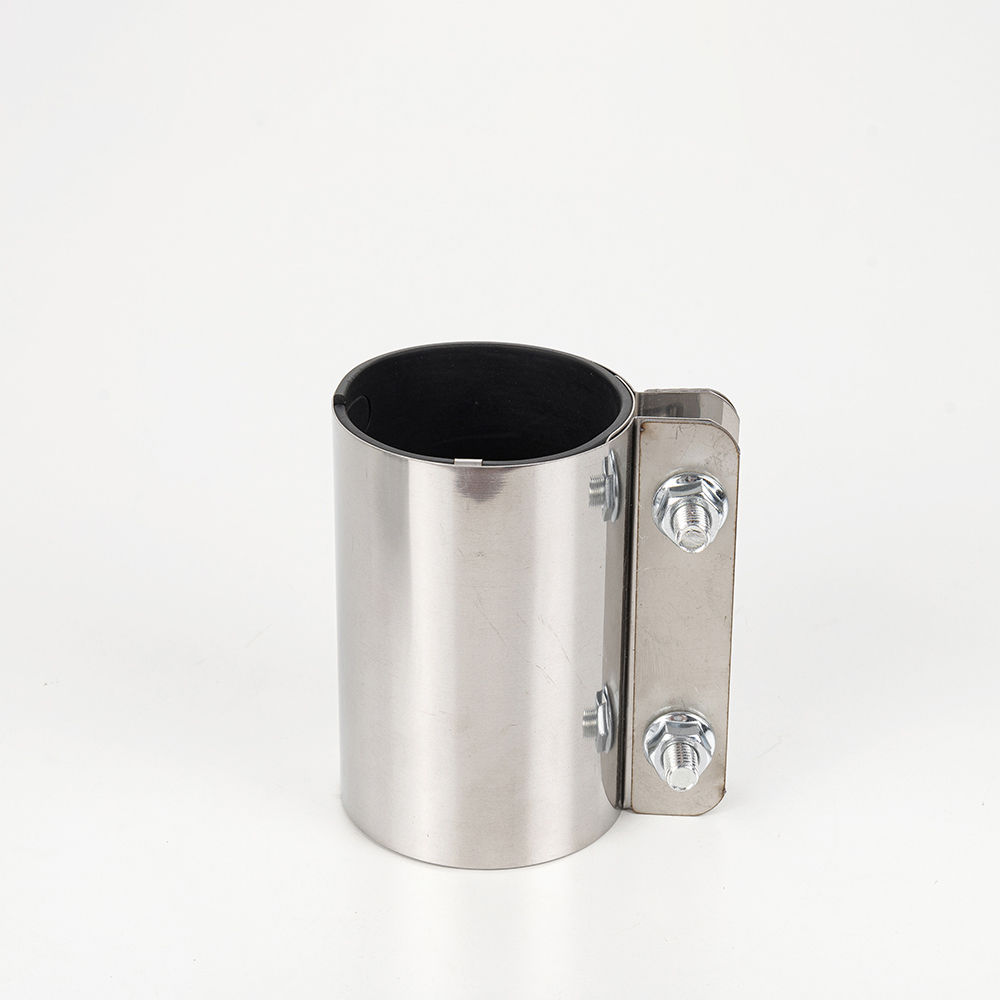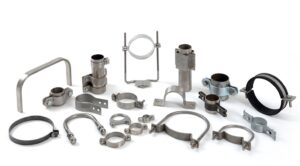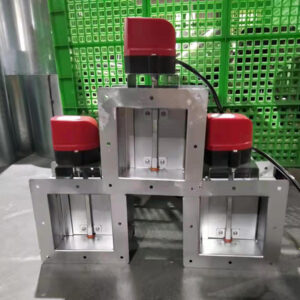Pneumatic conveying is a much more efficient way of transporting powders than conveyance belts, containers, or bags. It falls under different categories, including vacuum conveying and pressure air conveying. In either case, gas moves the components of the pneumatic conveying system from the start point to their destination.
When designing any pneumatic conveying system, you must consider the aspects that will influence its efficiency. Among these considerations is the type of pipe coupling (aka clamping) to use in each section. Typically, you can use Morris clamps, flanges, or SMS connections. Your choice will depend on factors such as possible system blockages and the need to dismantle the connections fast.
We will break down the different kinds of pipe coupling you can use and their overall effect on your pneumatic conveying system.
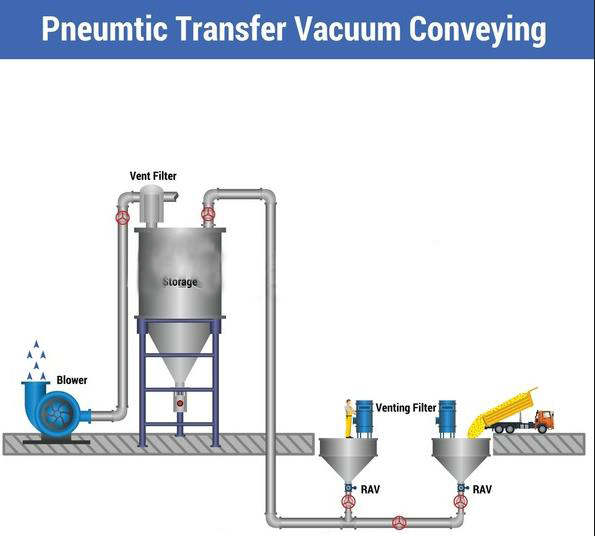
Types of Pneumatic Conveying Systems
Pneumatic conveying systems feature gas as the main component. This pressurized gas moves the materials inside the conveying system from one point to another. This gas can be anything, but most industries prefer using air for its affordability and lack of special considerations.
Let’s cover a few pneumatic conveying systems, as your choice also affects the pipe coupling you can use:
- Lean/ Dilute Phase: In this case, the product-to-air ratio is low, creating a cloud that moves through the conveying pipe. Most industries transport powder in this way.
- Dense Phase: This system features a different approach to the dilute phase. The product-to-air ratio is high, necessitating pressure or vacuum to move the product through the conveying system.
- Pressure Dense Phase: This conveying system also boasts a higher pressure than the lean phase.
- Pressure Lean Phase: As the name suggests, this system relies on pressure. You use a blower to introduce overwhelming pressure at the start of the conveying system, which quickly pushes the materials to the end of the system.
- Vacuum Lean Phase: This system works in contrast to the pressure lean phase. Rather than using a blower at the start of the system, it uses it at the end. Thus, the blower sucks the air in the pipe, creating a force that drags the materials to the end of the pipe.
- Vacuum Dense Phase: This system handles higher solid loads and thus requires a vacuum pump to withstand the high pressure drop.
All these systems require reliable pipe coupling to ensure the pressure remains constant, ensuring the smooth flow of materials in the pipes.
Types of Materials in Pneumatic Conveying Systems
We’ve covered the pressure considerations in pneumatic conveying systems. But what kind of solids pass through these pipes?
- Granulated,
- Pelleted, or
- Powdered/ pulverized.
The bigger the solids in the system, the higher the need for dense pressure or vacuum systems. For example, dense pressure systems can handle solid loads averaging 25-30, while lean pressure systems can only accommodate solid loads from 5-15.

Types of Pipe Coupling Used in Pneumatic Conveying
Besides the length and bends of the pipes in the system, you must pay close attention to the pipe couplings you use. Below are the main options used in the market and their pros and cons:
a. SMS Coupling
SMS connections, also referred to as SMS unions, feature a circular slotted nut with a lipped seal. They come in compact designs, making them suitable for pipework sections.
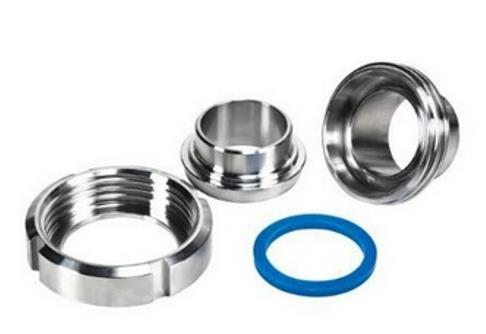
Benefits
- These connections are easy to dismantle. If you are working with solids that require you to often clean the pipes, these connections would be a great idea. You can remove and reinstall them without touching or affecting the other pipe connections.
- They feature different size ranges. You can get the connections in anything from 1” to 4”, allowing you to get a custom fit for your piping.
- They are great for hygienic fitting and have low maintenance needs.
- They are high performing and can withstand wear and tear without falling apart.
Plus, these connections are versatile, and you can use them in other areas besides pneumatic conveying. Examples include hydraulic piping and chemical fertilizer piping.
Downsides
- These connections require threaded pipes and may thus be more costly to install. Sometimes, they also pose a connection challenge, as threading them into place does not always come easily.
b. Morris Coupling
These couplings are often the top choice in piping and tubing for pneumatic conveying systems. They work for any system, regardless of whether it features a pressure or vacuum mechanism. Let’s find out why they are such a hit with industries:

Pros
- These couplings are easy to install. Unlike SMS couplings which require prior threading, that is not the case with these connections. You can use the pipe ends as they are without the need to prepare them,
- They feature a steel build which allows them to withstand pressurized use without falling apart,
- They come in different sizes, allowing you to choose what best works for your system. You can get anything from as low as 1” up to 24”!
- They have a tight fitting which allows the system to maintain the same pressure levels without suffering a decline in the coupling section, and
- They are less sensitive to pipe alignment as compared to SMS couplings.
Any Downsides?
These pipes take a while to dismantle. Moreover, adjusting them is not always an easy task.
c. Flange Connections
Flange couplings connect flanges using nuts and screws, creating an uninterrupted flow of materials between the shafts. They are often used in high-pressure conveying systems where uniform pressure is integral to the movement of goods.
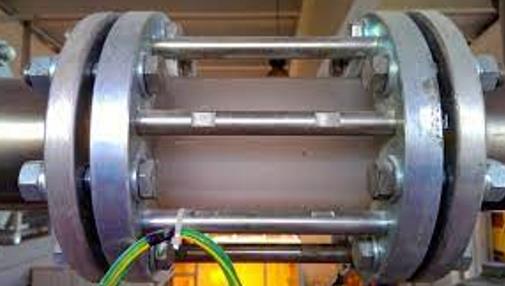
Benefits
- These connections are pretty sturdy, often featuring steel and alloy in their builds,
- They come in different options – unprotected, protected, and marine,
- They have a high transmitting capacity ideal in high-pressure setups,
- They have a simple construction that works with most designs.
Downsides
- These couplings cannot work well if there is a slight misalignment between the shaft axes,
- They work where there are no shocks and vibrations that could interrupt the flaw, and
- They need a lot more radial space compared to SMS and Morris couplings.
Also, dismantling these connections takes a long time. You must also change the gasket at each opening.
Which Couplings Work Best?
Your choice of couplings depends on the conditions of the conveying line. Morris couplings are often the best choice as they work great in pressure and vacuum settings. They also require fewer pre-installation considerations and are hardy.

